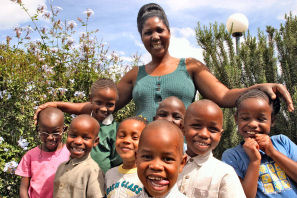SOS Children in a nutshell
SOS Children has villages and community projects all around the world, helping some of the world’s most vulnerable children.
We give children who have no one else to turn to the comfort and security of a new family and home in one of our SOS Children’s Villages. Regardless of race, religion or culture, children are given a new SOS mother, brothers and sisters and a home, where they can stay until they are old enough to lead their own independent lives. To help them achieve this, we provide these children and young people with the education, skills and knowledge they need to become contributing members of society.
By working with local communities, offering support to families through child care provision, counselling, medical advice and vocational skills as well as support for families that have been affected by illness or disease, our aim is to prevent the causes of child abandonment.
In a nutshell, SOS Children
works in 123 countries around the world
runs 473 SOS Children’s Villages and 383 Youth Homes
cares for more than 70,000 children
provides over 100,000 children with an education in its nurseries, primary and secondary schools
supports more than 1 million vulnerable children and their families through medical centres, social centres, vocational training schemes and emergency relief efforts

Orphans - what do we mean?
Sometimes we call ourselves the "world's largest orphan charity", and sometimes "the world's largest orphan and abandoned children's charity". In reality, different people understand different things by the term "orphan", and there is no one clear definition.
For example, the US Immigration Department describes an orphan as being a ‘child under the age of 16, who has lost the care of both parents’, which also includes abandoned children and those separated from their parents by Court Order. UNICEF, on the other hand, defines an orphan as any child up to 18 of whom one parent has died and uses the unusual term "double orphan" to indicate a child, in those cases where both parents have died. This makes the quoted number of orphans high and under this definition, children who are often no more at risk than children in single parent families are included as orphans.
What we mean is that SOS Children looks after children whose parents are not there to care for them and have no one else to care for them: in practice we may not always know if the parents have died or not. We try to reunite children with their families first and we don't keep centralised records on exact statistics by category.
We are, however, quite distinctive amongst charities of our size in having a specific mission to provide loving homes, stable relationships and a future for children with no-one else. No other charity with this primary mission is as big as SOS Children.